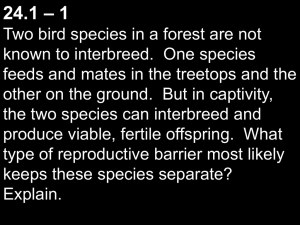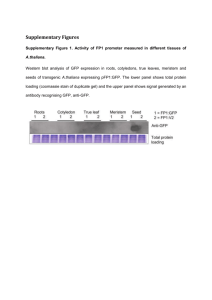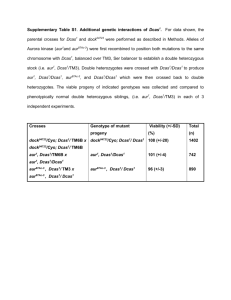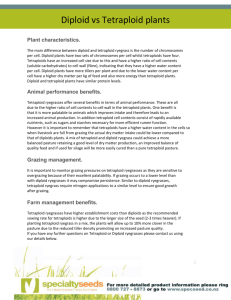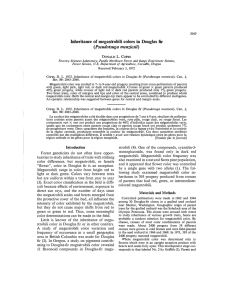POLYPLOID PROGENY FROM CROSSES BETWEEN DIPLOID
advertisement
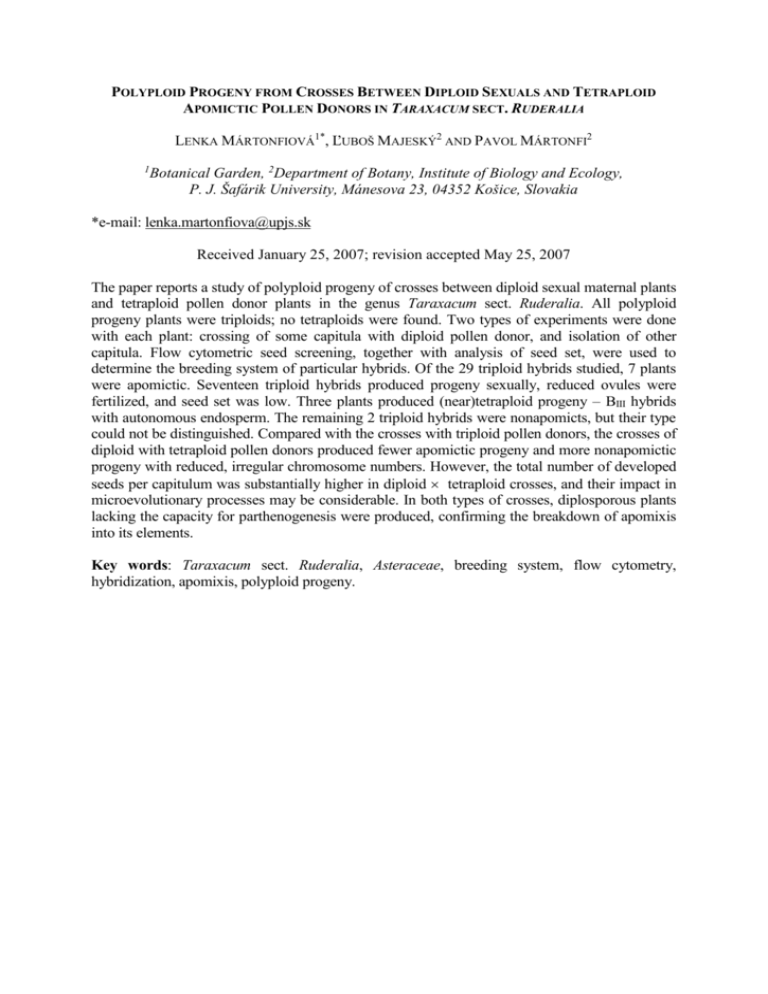
POLYPLOID PROGENY FROM CROSSES BETWEEN DIPLOID SEXUALS AND TETRAPLOID APOMICTIC POLLEN DONORS IN TARAXACUM SECT. RUDERALIA LENKA MÁRTONFIOVÁ1*, ĽUBOŠ MAJESKÝ2 AND PAVOL MÁRTONFI2 1 Botanical Garden, 2Department of Botany, Institute of Biology and Ecology, P. J. Šafárik University, Mánesova 23, 04352 Košice, Slovakia *e-mail: lenka.martonfiova@upjs.sk Received January 25, 2007; revision accepted May 25, 2007 The paper reports a study of polyploid progeny of crosses between diploid sexual maternal plants and tetraploid pollen donor plants in the genus Taraxacum sect. Ruderalia. All polyploid progeny plants were triploids; no tetraploids were found. Two types of experiments were done with each plant: crossing of some capitula with diploid pollen donor, and isolation of other capitula. Flow cytometric seed screening, together with analysis of seed set, were used to determine the breeding system of particular hybrids. Of the 29 triploid hybrids studied, 7 plants were apomictic. Seventeen triploid hybrids produced progeny sexually, reduced ovules were fertilized, and seed set was low. Three plants produced (near)tetraploid progeny – BIII hybrids with autonomous endosperm. The remaining 2 triploid hybrids were nonapomicts, but their type could not be distinguished. Compared with the crosses with triploid pollen donors, the crosses of diploid with tetraploid pollen donors produced fewer apomictic progeny and more nonapomictic progeny with reduced, irregular chromosome numbers. However, the total number of developed seeds per capitulum was substantially higher in diploid tetraploid crosses, and their impact in microevolutionary processes may be considerable. In both types of crosses, diplosporous plants lacking the capacity for parthenogenesis were produced, confirming the breakdown of apomixis into its elements. Key words: Taraxacum sect. Ruderalia, Asteraceae, breeding system, flow cytometry, hybridization, apomixis, polyploid progeny.
